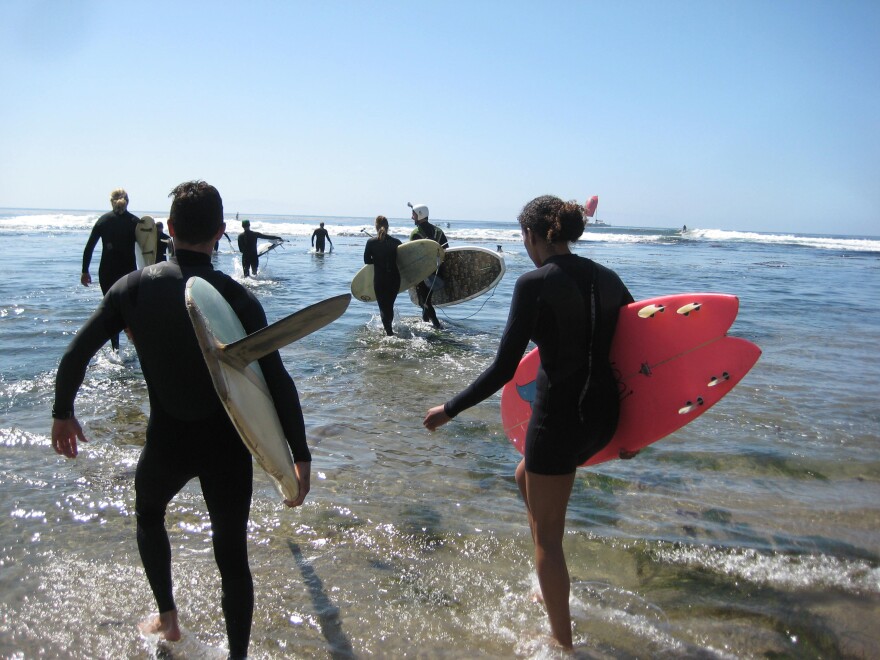Santa Cruz's new designation as a World Surfing Reserve is more than just an accolade for tourism brochures. It's a proactive move by surfers to protect the waves they love.
Long before surf music topped the charts and surfers had nicknames like Frosty and Boots. Surfers have been riding the waves in Santa Cruz. As the story goes, it all began in 1885. That’s when three Hawaiian princes were attending a nearby military school, and they were homesick. So they fashioned boards out of redwood, and rode the wave at the mouth of the San Lorenzo River. That rich surfing history plus the quality Santa Cruz’s 23 surf spots helped earn it the designation of World Surfing Reserve. Professional Surfer Robert Weaver, better known as Wingnut, is a reserve ambassador. “Since I have been everywhere around the world chasing waves, I still live in Santa Cruz, so that kind of tells you where it stacks up in the grand scheme. It’s not the warmest, it’s not the biggest, but it’s one of the most consistent waves in the world,” said Wingnut. The reserve runs along a near seven mile stretch of coast from Natural Bridges State Park to Pleasure Point.
The World Surfing Reserve designation was created by the Save the Waves Coalition in partnership with Australia’s National Surfing Reserves. “We were really looking for a way to be more proactive in our work, and to educate people on the value of these special places around the world,” said Dean LaTourrette, Board President of the Save the Waves Coalition, and member of the World Surfing Reserves executive committee. LaTourrette says they also want to be more proactive when it comes to addressing threats like water pollution, beach closures and coastal development. “Any coastal threat if you’re not involved early on in the process, say when a development plan is first being discussed in a community, it’s difficult to be successful. Because a lot of times we’ll come across these development projects when they are well underway, already have gone through approval processes. So again World Surfing Reserves is a way to get ahead of the curve,” said LaTourrette
That’s why each World Surfing Reserve must have a council of local stewards ready to take action when threats arise. Santa Cruz already has layers of protection through the California Coastal Commission, and it’s part of the Monterey Bay National Marine Sanctuary. Local steward Jim Littlefield says the council will be another watch dog. “The fact is we have lost many excellent surf breaks around the world due to ill-advised coastal development,” said Littlefield. Remember that wave that the Hawaiian princes caught? Well Littlefield used to surf it too. “The flow of the San Lorenzo has changed greatly over the years," said Littlefield, "there used to be an actual good surfing wave that was out there off of the river mouth. And in recent years that only exists under very specific conditions.” He says he doesn’t know if they could’ve saved that wave, but he doesn’t want to lose anymore.
Santa Cruz is now the fourth World Surfing Reserve. It joins Malibu, California; Ericeira, Portugal and Manly Beach, Australia. Next likely to earn the designation are Huanchaco, Peru and Uluwatu, Bali.


